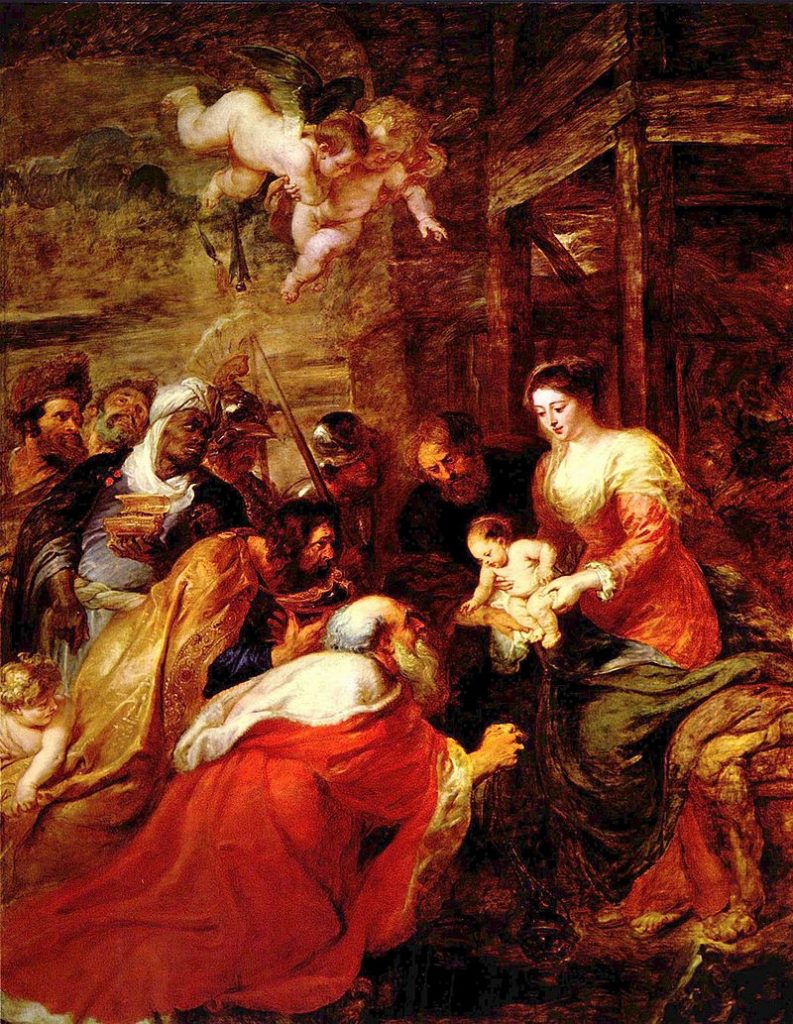
Peter Paul Rubens, oil on canvas, 1633-34, Kings college Cambridge, UK
Art has been a powerful conduit for expressing religious narratives, and few stories have captured the imagination of artists throughout history as profoundly as the birth of Jesus. The nativity scene, with its rich symbolism and spiritual resonance, has inspired a myriad of works that span centuries, cultures, and artistic styles. In this essay, we will delve into the diverse representations of the Nativity and examine how artists have interpreted this sacred event.
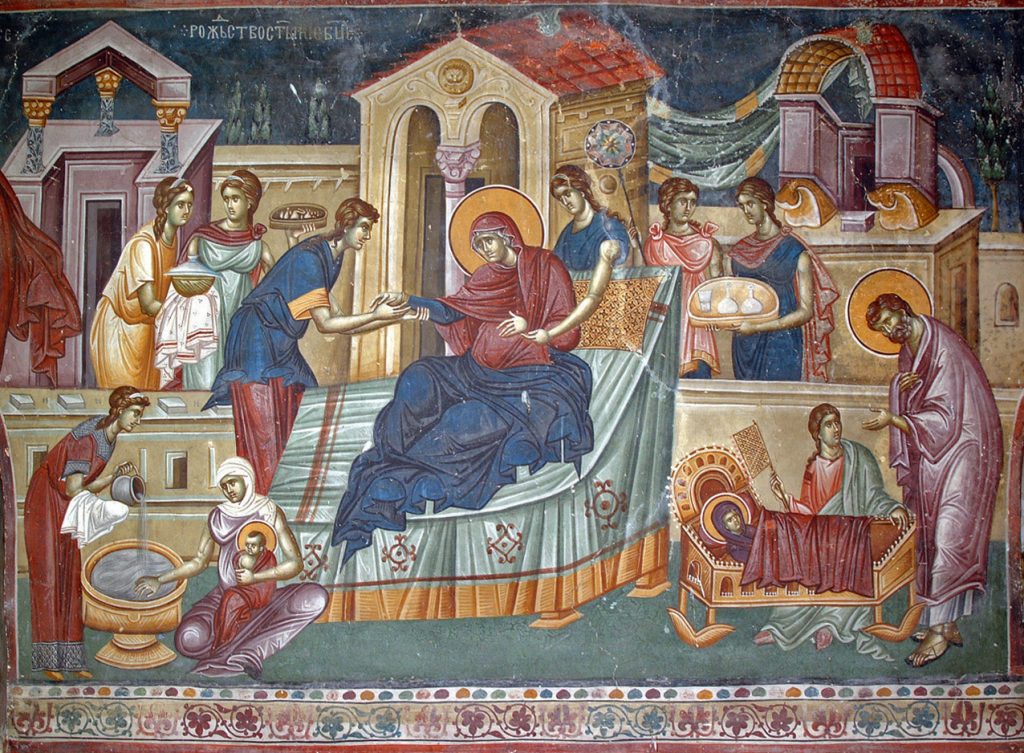
Birth of the Virgin fresco, c. 1314, King’s Church, Studenica Monastery, Serbia
Early Christian Icons: Simplicity and Symbolism
In the early Christian era, the Nativity was often depicted in frescoes and icons. These works, characterized by their simplicity and symbolic imagery, aimed to convey the theological significance of Christ’s birth. Artists focused on essential elements such as the Virgin Mary, the Christ Child, and the adoration of shepherds and wise men. The emphasis was on spiritual meaning rather than naturalistic representation.
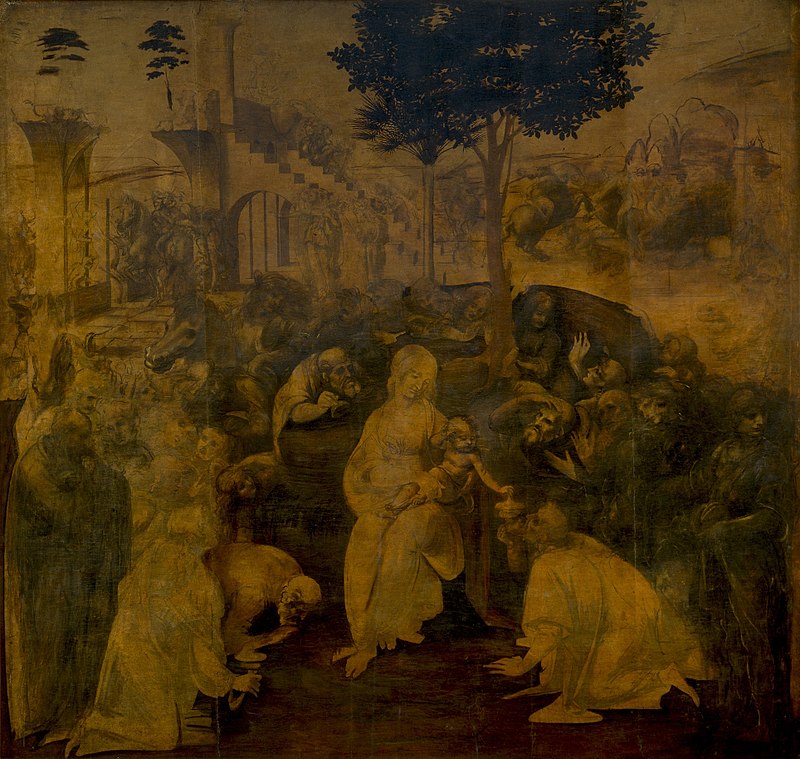
Adoration of the Magi(unfinished), Leonardo da vinci 1481, Oil on wood, Uffezi Gallery, Florence Italy
Renaissance Splendor: Humanizing the Divine
During the Renaissance, artists embraced a more humanistic approach to religious subjects. The Nativity became an opportunity to showcase technical mastery and a nuanced understanding of anatomy, light, and perspective. Painters like Leonardo da Vinci and Botticelli infused their works with a sense of awe and reverence while exploring the human aspect of the divine event. Mary’s tender gaze at the newborn Jesus and the intricate details of the stable setting became focal points of these masterpieces.
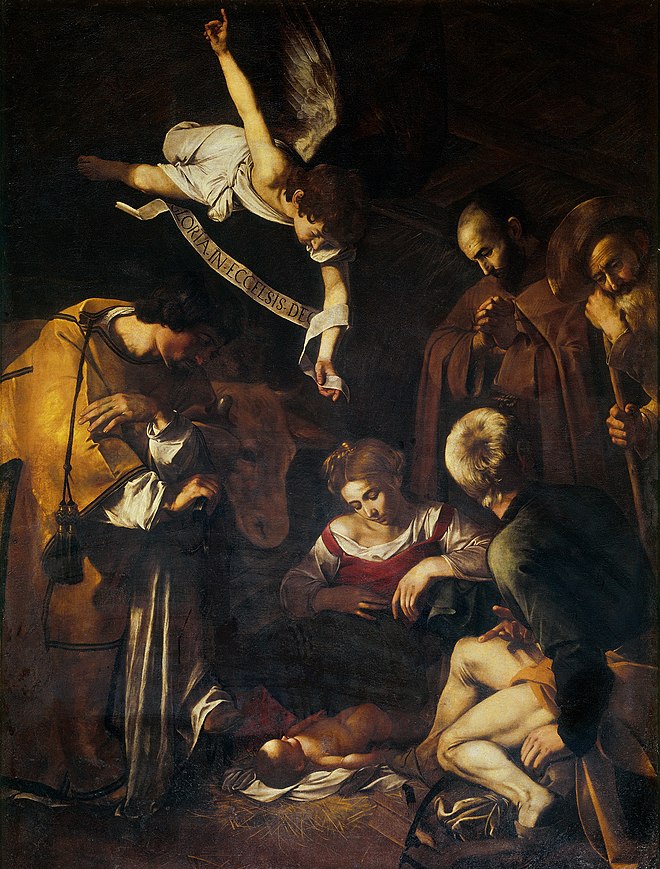
Nativity with St. Francis and St. Lawrence, Caravaggio, 1609. 268 cm × 197 cm (106 in × 78 in)(Missing)
Baroque Drama: Theatricality and Emotion
The Baroque period ushered in a sense of drama and emotion in depictions of the Nativity. Artists like Caravaggio and Gian Lorenzo Bernini sought to evoke a visceral response from viewers. Caravaggio’s use of intense chiaroscuro heightened the emotional intensity, while Bernini’s sculptures conveyed the ecstasy and reverence of the moment. The Nativity scene transformed into a theatrical spectacle that invited viewers to engage on an emotional level.
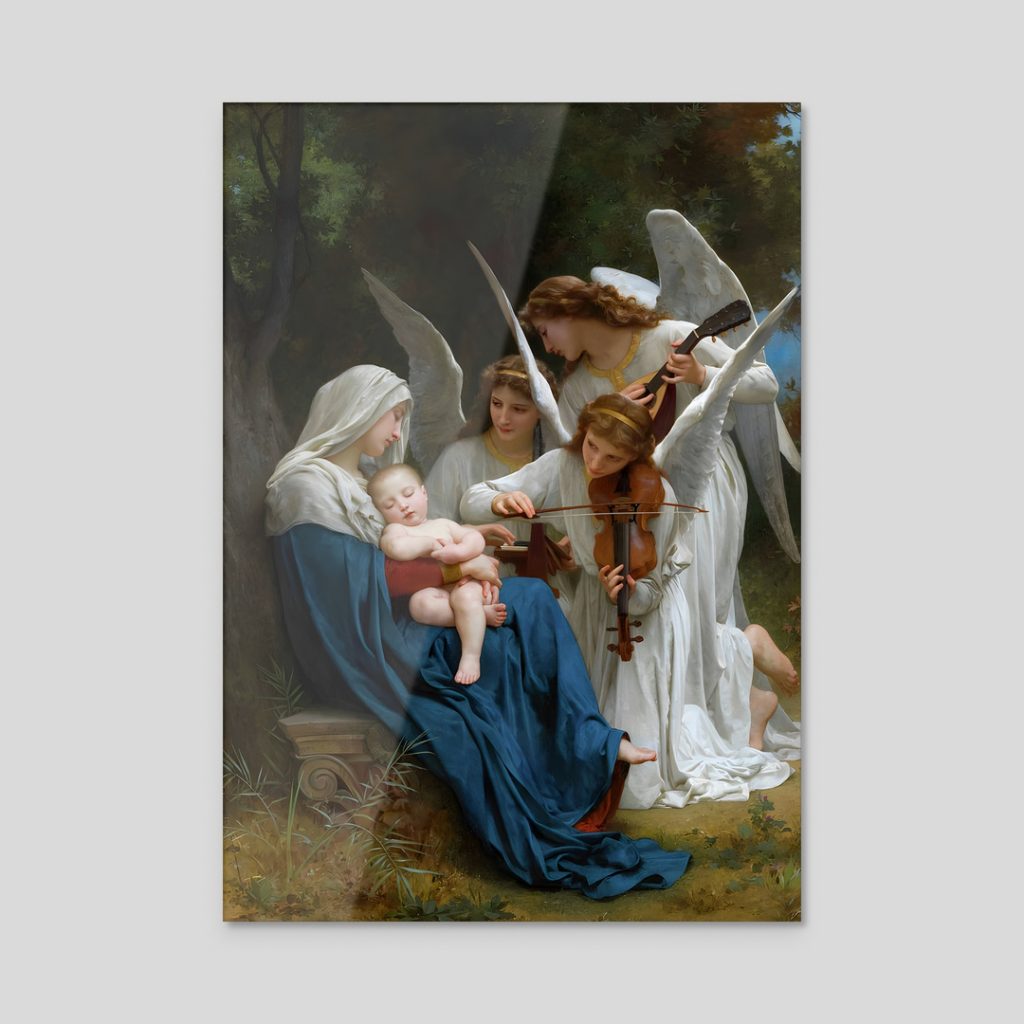
Song of the Angels, 1881, Oil on canvas
19th Century Romanticism: Embracing the Sentimental
The 19th century witnessed a shift towards Romanticism, where artists sought to evoke sentiment and nostalgia. Nativity scenes during this period often emphasized the humble and rustic aspects of the setting, portraying the Holy Family in a more intimate, familial light. The works of artists like Adolphe-William Bouguereau reflected a softer, emotionally charged interpretation of the Nativity, inviting viewers to connect with the tender moments of Jesus’ birth.
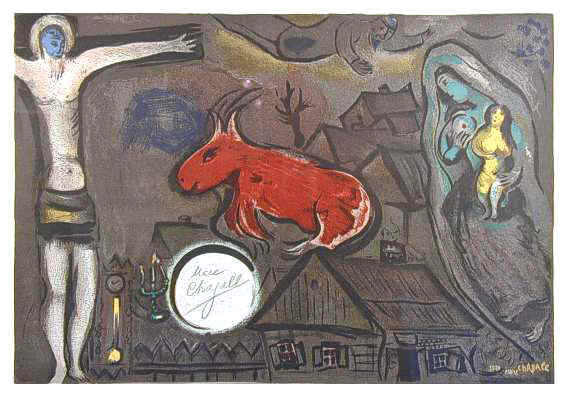
Marc Chargall, Nativity, 1950
Modern and Contemporary Perspectives: Diverse Interpretations
In the modern and contemporary era, artists have approached the Nativity with a wide range of interpretations. Some, like Marc Chagall and Henry Ossawa Tanner, embraced symbolic and abstract elements, infusing the traditional narrative with a personal and cultural context. Others, such as Salvador Dalí, experimented with surrealism, presenting the Nativity in dreamlike and fantastical compositions.
Conclusion: A Timeless Tapestry of Faith and Artistry
The artistic representations of the birth of Jesus form a timeless tapestry that weaves together faith, culture, and artistic innovation. From the serene simplicity of early Christian icons to the dramatic intensity of the Baroque period and the diverse interpretations of the present day, each era has contributed to the unfolding narrative of the Nativity. These works serve not only as visual testimonies of religious devotion but also as windows into the evolving expressions of spirituality and artistic creativity across the ages. The birth of Jesus, captured on canvases and in sculptures, continues to resonate as a source of inspiration and contemplation, inviting viewers to connect with the profound mysteries of faith and the enduring power of artistic expression.
